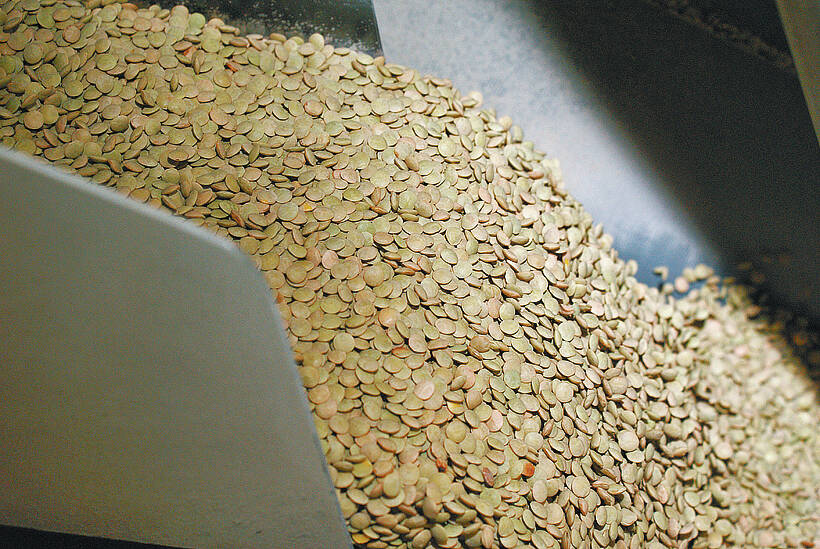This cattle market information is selected from the weekly report from Canfax, a division of the Canadian Cattlemen’s Association. More market information, analysis and statistics are available by becoming a Canfax subscriber by calling 403-275-5110 or at www.canfax.ca.
Fed cattle up
The Canfax steer average hit a new second half high at $154.26 per hundredweight, up $2.27, and heifers jumped $7.21 to average $155.54.
Fed steers were 44 cents per cwt. higher than last year.
Read Also

Green lentil market oversupplied
Farmers in Western Canada can expect price pressure on their new crop of green lentils, as the available supplies among the world’s major lentil-growing nations increase significantly.
Tighter market-ready supplies and three packers all aggressively trying to procure cattle supported Alberta fed prices.
Dressed prices were $5-$9 per cwt. higher than the midweek bids.
Cattle will be delivered in one or two weeks.
With Alberta rail prices $20-$25 per cwt. higher than Ontario, eastern cattle could potentially start moving west.
Two weeks ago, Ontario steer carcasses averaged 957 pounds, 13 lb. lower than last year, while in the West carcasses were 895 lb., 18 lb. lower than last year.
Feedlot inventory is current, but packers this week will be buying for the short holiday weeks.
In the United States, trade in the south was up $1-$3 with the top end at US$120. Trade in the north was not fully developed at press time but had a stronger tone.
Analysts expect record production of meat (beef, pork and poultry) in 2018. Strong exports will be needed to prevent a backup of supply.
Cows stronger
For the second week, western Canadian cow slaughter topped 10,000 head. That last happened December 2013.
From their November low, D1, D2 cow prices have risen $4.75 per cwt. Alberta D1, D2 cow prices remain at a sizable premium to the Ontario and U.S. markets.
Last week D1, D2 cows ranged $81-$95 to average $89.30, up $2.70. D3 cows ranged $70-$87 to average $79.60.
Rail grade ranged $170-$175.
With the holidays coming, packers will want to secure more inventory. Premiums will likely be paid if cows can be delivered over Christmas or New Years.
Packers are seeing good value in cows, suggesting there is more upside to the cow market.
Manitoba market hot
Western Canadian calf and feeder values traded steady to lower, but the Manitoba steer calf market was notably strong.
That strength in stockers supported western index values.
Manitoba 550 lb. steers traded at a $4-$5 premium over Alberta and Saskatchewan, while 650 lb. Manitoba steers were $8-$10 higher.
Heifer calves narrowed the price gap with their steer mates. Heifers 550 lb. were $26.50 lower than steers. The spread is narrower than last year, which is surprising, considering that barley prices are 29 percent higher.
The Chicago cattle futures market suggests that 2018 prices from first half highs to second half lows will fall eight percent. Second half lows could be near US$111.
At this point last year, the futures market was indicating a 12 percent decline from spring highs to summer lows.
With more cattle on feed in the U.S. compared to last year, there may be downside risk to the summer futures market.
A one cent move on the futures market can affect Canadian feeder prices by as much as $2.
Bred cows averaged $2,025, and bred heifers were $2,300.
Prices are now slightly higher than last year.
On feed report
The number of cattle in Alberta and Saskatchewan feedlots Dec. 1 was 974,881 head, up 12 percent over last year, or about 100,000 head. The number was up two percent over the five year average.
It was the most since 2013.
Placements in November were 321,259, up 19 percent over last year and up 22 percent over the five year average. The increase was mostly in steer placements.
October placements were also strong, and together the two-month tally was the largest since 2005.
Marketings in November were 131,886, up four percent from the previous year.
Marketings will moderate in the first quarter of 2018 but will jump higher in the third quarter because of the large number of calves placed this fall.
Beef lower
U.S. boxed beef prices traded lower with Choice down $4.04 at $201.04 per cwt. and Select was down 14 cents at $183.69.
Christmas buying has mostly wrapped up and the market will be quiet the next two weeks.
Canadian prices were not available.














